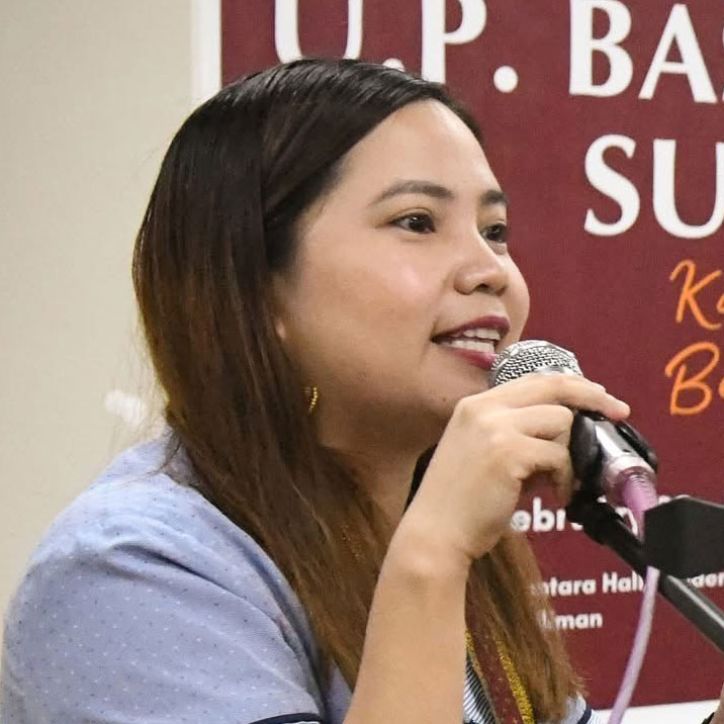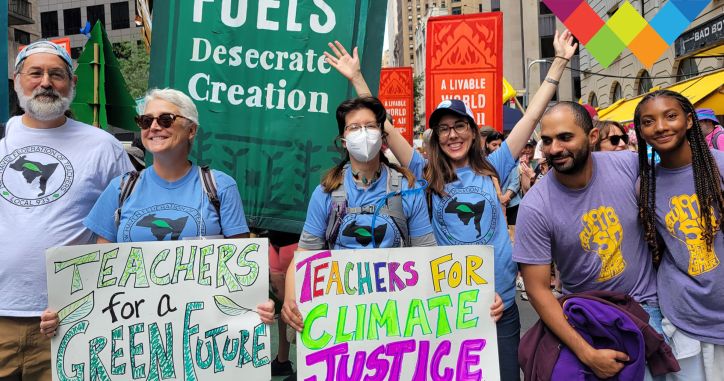Teachers at the heart of climate justice: Addressing the crisis in Philippine schools
Sign up
Sign up for the Worlds of Education newsletter.
Sign up
Sign up for the Worlds of Education newsletter.
Thank you for subscribing
Something went wrong
“These are not new problems; they are the result of decades of neglect in the education sector, now magnified by the escalating climate crisis. If we continue to ignore these urgent issues, our schools will remain not just ill-equipped for learning, but hazardous places for both students and teachers.”
The Philippines consistently ranks among the most disaster-prone countries globally, according to the World Risk Index. For the past two decades, our country has endured the highest number of extreme weather events. I was born at a time when volcanic eruptions, powerful earthquakes, and devastating typhoons were regular occurrences. Now, we also face the worsening impacts of heat waves and El Niño. Disasters have become so ingrained in our daily lives that typhoons are given names like familiar acquaintances, and major calamities are often tied to personal histories—like how I was named after Ruby Tower, a building that collapsed in a catastrophic earthquake. Almost every Filipino—except perhaps the wealthiest—has, at some point, waded through flooded streets, felt anxious about the looming “Big One”, or grown frustrated by the government’s reliance on donations instead of proactive disaster preparedness.
No one is exempt from disasters. When I became a teacher, I saw firsthand how schools, despite their own vulnerabilities, were always expected to serve as evacuation centers.
A crisis in education, worsened by climate change
For years, the Philippine education system has struggled with severe backlogs—chronic classroom shortages, a lack of both teaching and non-teaching personnel, and an absence of sufficient health workers in schools. We teach in overcrowded classrooms with inadequate facilities, including health clinics that either don’t exist or lack basic supplies. These longstanding issues are now being amplified by climate change. As I write this, nearly 7,000 schools across the country have been forced to suspend in-person classes and shift to flexible learning due to extreme heat, affecting over 3.6 million students. March, April, and May are typically the hottest and driest months in our archipelago, but the ongoing El Niño phenomenon has pushed temperatures to dangerous levels. Many teachers and students experience dizziness and headaches due to the intense heat. We are trying to prevent a repeat of last year’s incidents, where students were rushed to school clinics after suffering from nosebleeds or, in worse cases, fainting. However, with a severe lack of school health facilities and personnel, addressing these health risks remains a major challenge. Poor classroom ventilation and severe overcrowding—where a single class can have up to 60 students—only make matters worse. These are not new problems; they are the result of decades of neglect in the education sector, now magnified by the escalating climate crisis. If we continue to ignore these urgent issues, our schools will remain not just ill-equipped for learning, but hazardous places for both students and teachers.
As teachers, what we do in our schools is fundamentally for the next generation, addressing their needs and shaping their futures. This commitment is at the core of our involvement in climate justice actions—our role as educators is intrinsically linked to these efforts. It’s important to recognize that as teachers and members of an education union, we have the power to effect broader systemic change. We are often told, and sometimes teach, that all we can do is adopt the mantra of Reduce-Reuse-Recycle, focusing solely on individual lifestyle changes. However, we must go beyond this limited scope and realize that together, collectively, we can challenge and transform the system. The strength of our union, which has been demonstrated throughout our history, shows that collective action can lead to significant change. We need to empower ourselves through education and acknowledge that schools are the heart of the community. Teachers should be at the forefront, molding public opinion and engaging in transformative actions. We must also listen to and learn from the most marginalized in our societies, letting them lead the way. By holding firm in solidarity and supporting these voices, we uphold the true spirit and power of our union. Together, we can drive systemic change and truly make a difference.
What have we done as a union?
This is the question we must ask ourselves. In response to the extreme heat, we have taken several steps to address the crisis and push for necessary reforms in the Philippines.
Our General Program of Action includes the immediate release of emergency funds to urgently repair water sanitation facilities, improve ventilation, and upgrade school clinics.
We are also advocating for the fast-tracking of the construction of 15,000 climate-resilient classrooms, a commitment made by the new Secretary of the Department of Education (DepEd). To ensure that educational institutions can adapt to these climate challenges, we have demanded the inclusion of unions in consultations regarding emergency protocols and mechanisms that allow learning to continue despite heatwaves. Furthermore, we are calling for additional funding to be allocated for more health personnel, better-ventilated classrooms, and the development of climate-resilient school environments.
We also emphasize the need for climate education to be fully integrated into the curriculum, equipping students with knowledge about the environmental challenges they will face. Beyond policy proposals, we have actively engaged the government through campaigns and advocacy efforts.
One of our most significant victories has been successfully advocating for the adjustment of the school calendar. Since April and May are the hottest months in the Philippines, we pushed for the academic calendar to return to a June–March cycle, which will take effect in the next school year.
Additionally, we campaigned for the government to release clear guidelines on overtime pay for teachers working extra hours, especially when schools serve as evacuation centers during disasters.
Our efforts have not gone unnoticed—we have gained national attention, making headlines in various news outlets, newspapers, and radio programs as we continue to amplify our calls for action.
We have also taken our fight to the legislative arena. With the support of our teachers’ representative in Congress, we conducted congressional hearings focused on securing funding for climate-resilient classrooms and addressing the impact of heatwaves on students and teachers.
Our advocacy extended beyond legislation, as we actively participated in climate actions, including Earth Day mobilizations, budget hearings in Congress and the Senate, and initiatives to protect our fellow unionist, regional coordinator, and environmental human rights defender, Eco Dangla, who was recently abducted.
Recognizing the vital role of Indigenous communities in environmental protection, we have revived ACT’s Indigenous Peoples Network, also known as the Save Our Schools Network. Indigenous groups possess invaluable knowledge and experience in safeguarding natural resources, making them key allies in the fight against climate change. Through collaborations with experts from various universities across the Philippines, we are working to promote a nationalist education framework that integrates environmental advocacy, ensuring that future generations understand the urgency of climate action.
Through these initiatives, we continue to fight for a more resilient, just, and sustainable education system—one that protects both students and educators from the worsening effects of climate change. We need to decolonize and decarbonize education, supporting each other along the way. We are in this predicament not because of equal contribution but due to a clear structure of inequality at the heart of the climate crisis. If this is not acknowledged in our classrooms, we fail an entire generation of students and neglect the realization of the right to education.
The opinions expressed in this blog are those of the author and do not necessarily reflect any official policies or positions of Education International.







